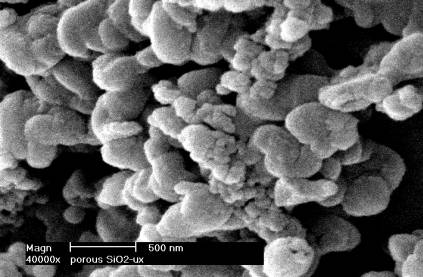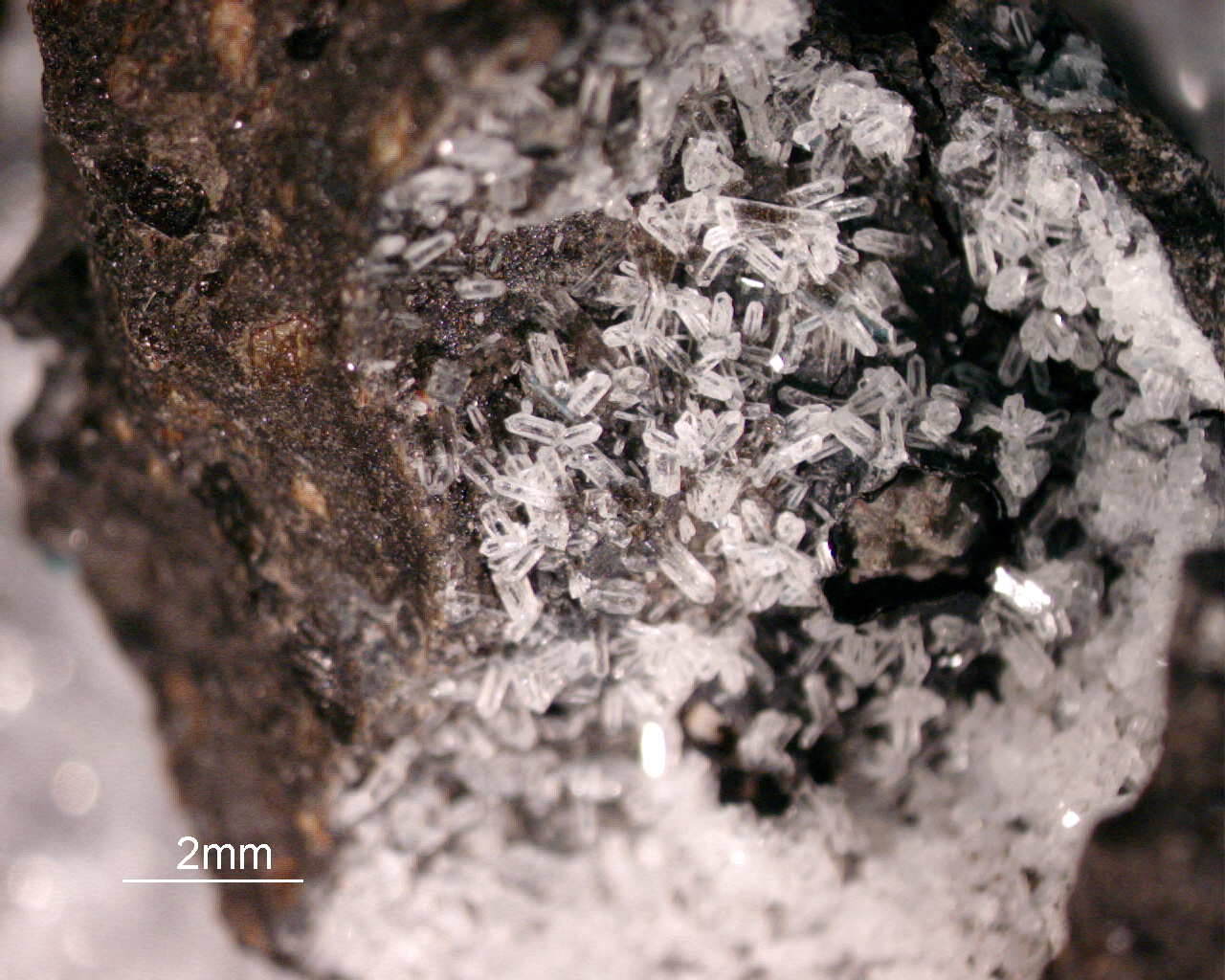Microanalysis
in Geochemistry and Cosmochemistry
Organic-Inorganic
Nanoparticle Interactions in Sedimentary Systems
Nanoscale
Magnetic Particles in Rocks and Sediments as recorders of the ancient magnetic
fields and microbial biospheres on Earth and Mars
Nanoparticle
Mineralogy and Physical Geochemistry
Research into the behavior of many elemental and isotopic systems in minerals (naturally occurring chemical compounds) has revealed that these compounds respond to changes in environmental conditions differentially at spatial scales of nanometers to micrometers (i.e., below the limits of optical resolution). The microscopic sub-systems that develop in minerals often record valuable information about the conditions under which they formed, including the compositions of fluids with which they interacted, the compositions of solids with which they equilibrated, and the time at which these conditions developed. Similar information can also be extracted from extra-terrestrial minerals (e.g., from meteorites and cosmic dust), which has greatly enhanced our understanding of cosmochemical reactions ranging from nucleosynthesis to planetary formation. Furthermore, the ability of earth scientists to model chemical and biological reactions under extreme conditions (both terrestrial and extraterrestrial) often involve experiments in which the experimental charge has a volume of only a few cubic nanometers. Consequently, earth and environmental scientists have been developing techniques and technology to investigate the reactions that occur in these realms for many years. Researchers in the Department of Geological Sciences routinely use various micro-analytical techniques (e.g., laser probes, electron probes, and ion probes) to investigate the ages of the Earth's most ancient rocks, the chemical and isotopic character of fluids that have altered the composition of the Earth's crust, and the ages of minerals important to the reconstruction of Earth's past climates, to trace the migration paths of human populations.
Faculty:
Paul
Mueller
David
Foster
Michael
Perfit
Philip
Neuhoff

Organic-Inorganic Nanoparticle Interactions in Sedimentary Systems
Interactions between microbes, sediments, and organic matter in sedimentary systems often occur at the sub-micron scale. These processes lie at the frontier of understanding the chemical and physical development and biogeochemistry of sediments during early and burial diagenesis. Current research at UF is focused on questions surrounding the role of nano-scale processes on organic-inorganic processes in recent sediments. For instance, how do nano-sized organic carbon compounds influence sedimentary particle dynamics in marine environments? Does natural mineral nanoporosity aid in the adsorption of organic molecules within sediments and soils? What kind of organic matter will adsorb into what kind of pores? Does adsorption within pores aid in the preservation of organic matter (by exclusion of bacteria) and how do these processes affect the sediment paleo-record, agriculture, and contaminant remediation?
Faculty:
John
Jaeger
Andrew
Zimmerman
Single-domain (SD) magnetite (in the 30-500 nm size range) is the most important carrier of remnant magnetization in rocks and sediments. Larger, multi-domain grains carrier a "softer" magnetization that is usually unstable on geologic timescales. The small size of SD magnetite makes characterization using scanning electron microscope (SEM) or transmission electron microscope (TEM) is difficult. We have developed techniques for Fe-mapping of polished limestone surfaces with 1 ppm detection limits using X-ray Absorption Spectroscopy (XAS) at Argonne National Laboratory. Given the narrow focusing of X-ray beam in this synchrotron source (1-5 µm) beam-widths, single 10nm particles of SD magnetite can be detected within a single 3 µm spot analysis. These analyses are also sensitive to oxidation state and local bonding structure, and thus provide information about the mineralogy of Fe. This work offers a tool for studying biogenically produced magnetite particles in ancient sediments on Earth and in Martian samples.
Follow this link for a more detailed description
These same techniques are being applied to studies of magnetic nanomaterials in brain tissue.
Faculty:
James
Channell

Nanoparticle Mineralogy and Physical Geochemistry
Nanoparticles in natural systems are comprises of a broad spectrum of mineral and mineraloid species. These materials are often among the most readily-formed solid phases at under surficial and diagenetic conditions, even though at larger crystal sizes these materials may be metastable. This stems largely from the fact that many common nanoparticle phases have lower surface energies than common stable silicate and oxide minerals. In addition, their surface properties of affords them unique abilities to sorb and desorb organic and inorganic species. Recent work has been concentrated on humate and related materials on the surfaces of a several minerals including clay minerals and phosphates. Other aspects of this work include studies of ordered-disordered structures, compositional inhomogeneities , and recrystallization mechanisms. In addition, we have been investigating the fundamental thermodynamic properties of these materials through calorimetric, phase equilibrium, spectroscopic, and theoretical methods in order to develop rigorous quantitative models of their stability and fate in geochemical systems. Of particular interest in this work are zeolites, clays, Fe-Ti oxides, and phosphate minerals. These data are of importance not only for assessing the behavior of these materials in natural systems, but in industrial processes as well. One major thrust of our current research is understanding the behavior of nanophase water included in zeolites, which is an important process in dessication and heat pump technology.
Faculty:
Guerry
McClellan
Philip
Neuhoff